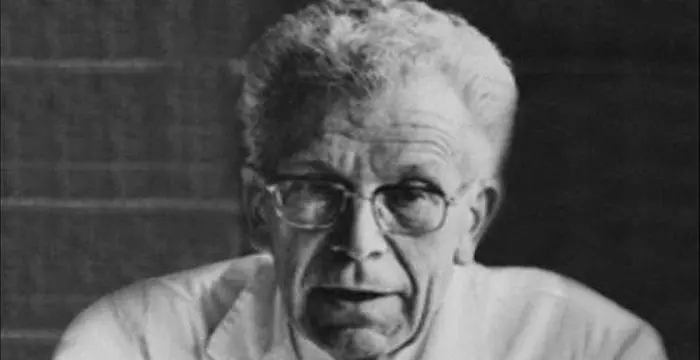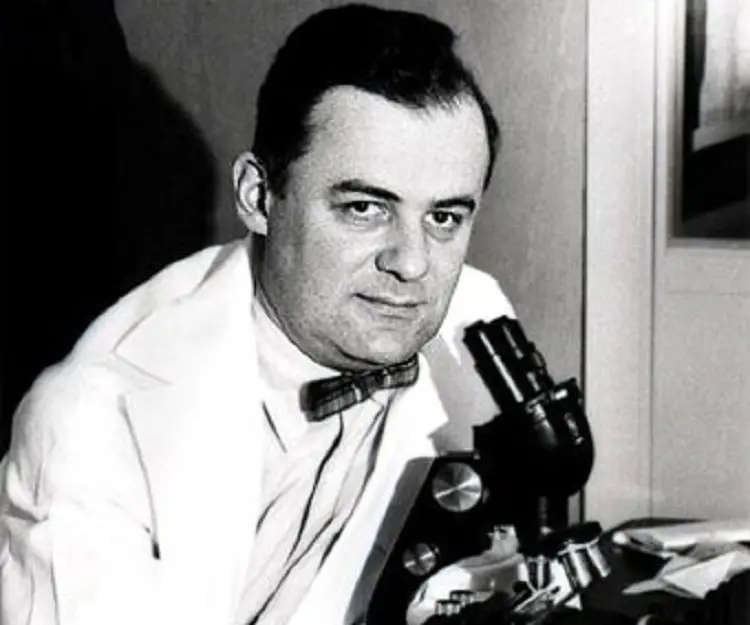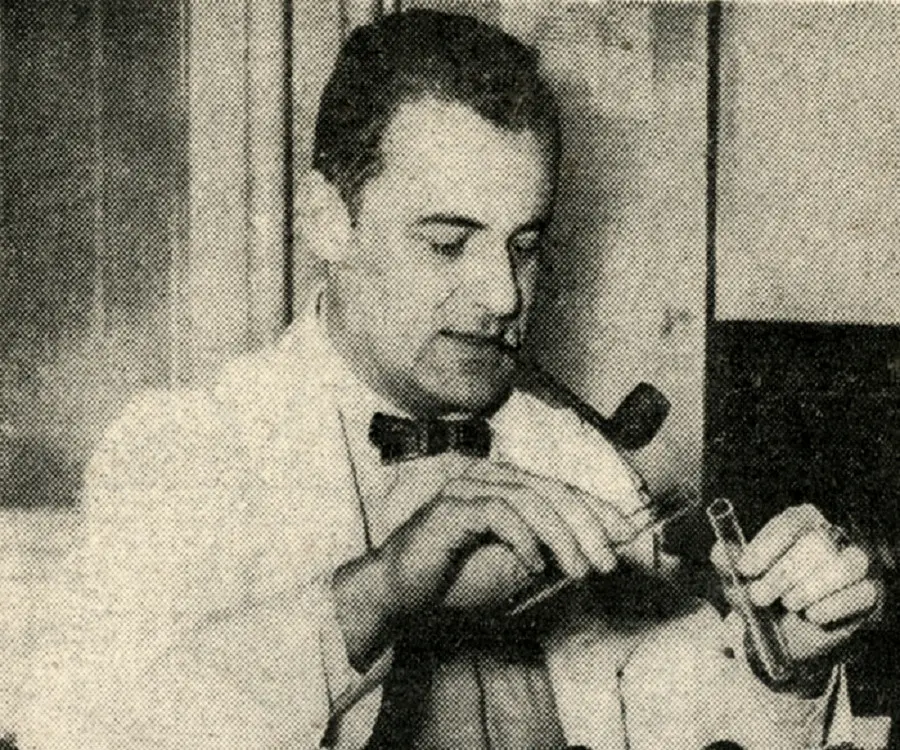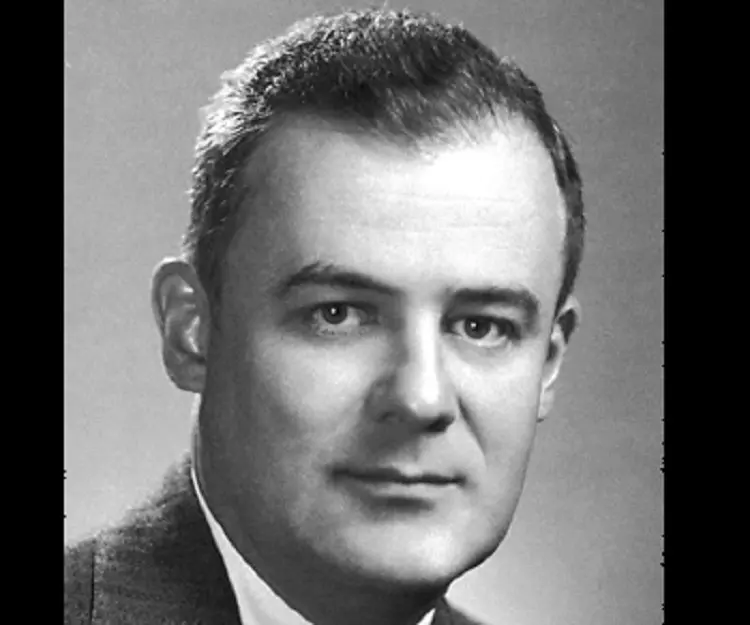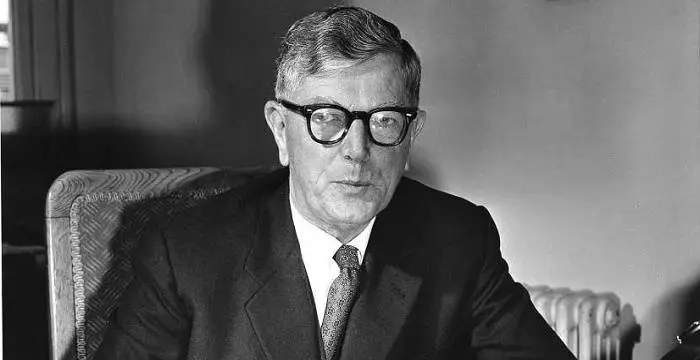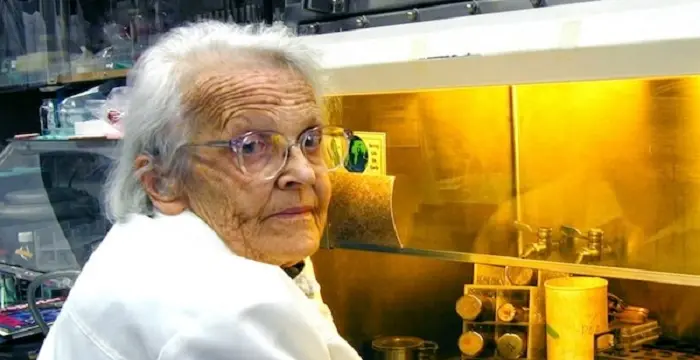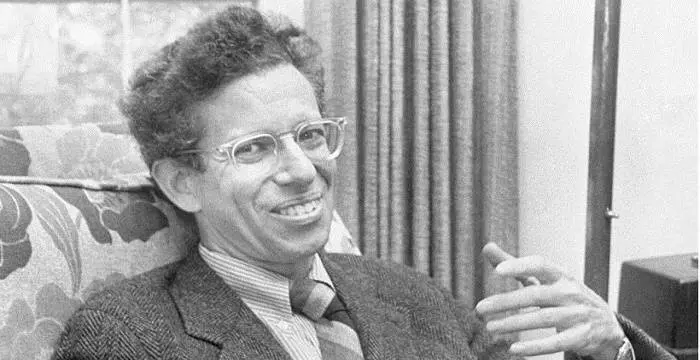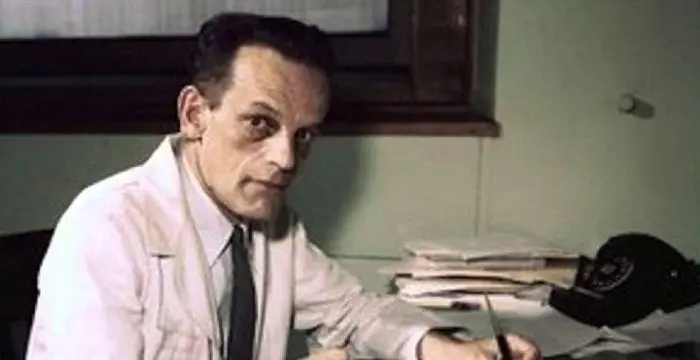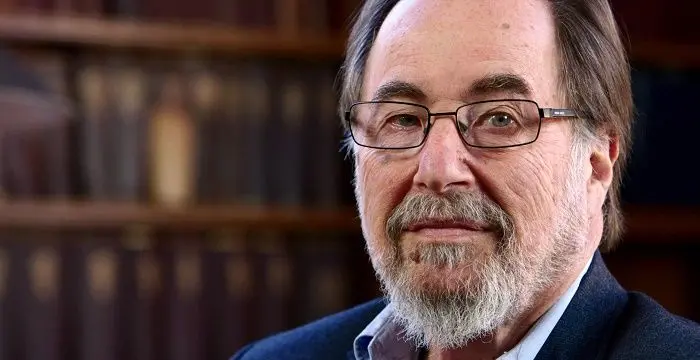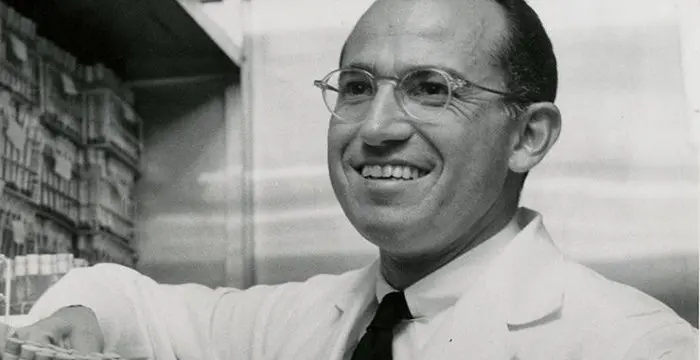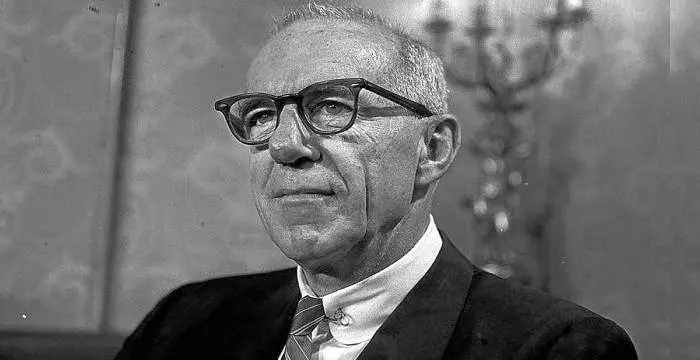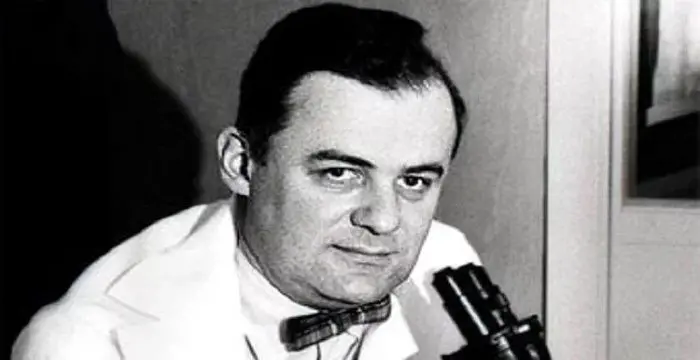
Frederick Chapman Robbins - Virologists, Family and Life
Frederick Chapman Robbins's Personal Details
Frederick Chapman Robbins was an American paediatrician and virologist who was one of the joint winners of the 1954 Nobel Prize in Physiology 1954
| Information | Detail |
|---|---|
| Birthday | August 25, 1916 |
| Died on | August 4, 2003 |
| Nationality | American |
| Famous | Physicians, Pediatricians, Medical Scientists, Virologists, Paediatrician, Virologists |
| Hobbies | Photography, Reading, Backpacking, Traveling |
| City/State | Alabama |
| Birth Place | Auburn, Alabama, United States |
| Gender | Male |
| Sun Sign | Virgo |
| Born in | Auburn, Alabama, United States |
| Famous as | Virologist and Paediatrician |
| Died at Age | 86 |
// Famous Paediatrician
Hans Asperger
Hans Asperger’s was the Austrian psyciatrist and paediatrician after whom Asperger’s syndrome is named. Know more about his life in this biography.
Frederick Chapman Robbins's photo
Who is Frederick Chapman Robbins?
Frederick Chapman Robbins was an American paediatrician and virologist who, along with John Franklin Enders and Thomas Huckle Weller, won the 1954 Nobel Prize in Medicine. The trio was awarded for their discovery of the ability of poliomyelitis viruses to grow in cultures of various types of tissue. This was a revolutionary discovery of that time as it helped to grow the virus in test tube and in turn develop a vaccine that eventually has eliminated the crippling disease from most of the countries across the globe. The breakthrough work in isolation and growth of the polio virus had expansive dividends. The tissue culture technique developed helped isolate increasing number of viruses of infectious disease and also had important implications for cancer. Apart from his scientific career, Robbins played a crucial role as an academic leader as well. He served as President of the National Academy of Sciences' Institute of Medicine and as Professor Emeritus of Case Western Reserve Medical School.
// Famous Virologists
Frank Macfarlane Burnet
Sir Frank Macfarlane Burnet was an Australian virologist and immunologist, known for his contributions in human biology. This biography profiles childhood, life, career, achievements and timeline of this Nobel Laureate.
Marguerite Vogt
Marguerite Vogt was a German-born American cancer biologist and virologist best known for her research on polio and cancer.
Howard Martin Temin
Howard Martin Temin was an American geneticist and virologist who won a share of the 1975 Nobel Prize in Physiology or Medicine.
Childhood & Early Life
Frederick Chapman Robbins was born on August 25, 1916 in Auburn, Alabama, to botanists parents, William J Robbins and Christine nee Chapma. His father was a plant physiologist who eventually became the Director of the New York Botanical Gardens.
After completing his preliminary education, Robbins gained admission at the University of Missouri. Therein, he first gained his A.B degree in 1936 and the B.S degree in 1938.
Following his B.S. degree, Robbins enrolled at the Harvard Medical School. He graduated from there in 1940.
Career
Immediately following his graduation from Harvard Medical School, Frederick Chapman Robbins was appointed as a resident physician in bacteriology at The Children's Hospital Medical Center in Boston, Massachusetts. For the next two years, he continued his training there.
In 1942, Robbins left his training at the Children’s Hospital Medical Center to serve in the United States Army. During his service in the army, Robbins was assigned as a Chief of the Virus and Rickettsial Disease Section of the Fifteenth Medical General Laboratory. In this capacity, he served at various places including United States, North Africa and Italy. At the same time, he held the post of a supervisor of the diagnostic virus laboratory and simultaneously studied the immunology of mumps.
In 1946, Robbins was relieved off his military duties. Immediately thereafter, he resumed his training at the Children’s Hospital Medical Center, finally completing it in January 1948.
From 1948 to 1950, Robbins held a Senior Fellowship in Virus Diseases of the National Research Council. Simultaneously, he served as the member of the Faculty of the Harvard Medical School.
In 1948, Robbins collaborated with Dr John F. Enders in the Research Division of Infectious Diseases, The Children's Hospital Medical Center. At that time, there was no easy way for scientists to work with the viruses in the laboratory. They instead had to conduct research on eggs, mice, monkeys and other animals.
Robbins along with his team members, worked to grow polio and other viruses in the laboratory so as to make vaccines. Finally after much effort, using a mixture of human embryonic skin and muscle tissue, Robbins, together with Enders and Weller, was able to grow the viruses. Following this, the trio studied the cultivation of poliomyelitis virus in tissue culture and the application of this technique. This achievement helped Dr Jonas Salk to develop polio vaccines.
In 1952, Robbins moved to Cleveland, Ohio. There, he was appointed as the Professor of Paediatrics at the Case Western Reserve University School of Medicine. Simultaneously, he held the post of the Professor of Contagious Diseases at the Cleveland City Hospital (today known as MetroHealth Medical Center).
From 1966, Robins served as the Dean of the School of Medicine at the Case Western Reserve Hospital. He served in this position until 1980.
In 1980, Robbins took up the Presidency of the National Academy of Sciences' Institute of Medicine. It was at the institute that Robbins was credited for creating a solid foundation for programs contributing to national policy on vaccine development, vaccine safety and work force issues. He also developed programs to focus attention on public policy dealing with AIDS.
In 1985, Robbins gave up his post of Presidency to return to Case Western Reserve as Dean Emeritus and distinguished University professor Emeritus. He continued to serve at the medical school until his death in 2003.
Major Works
Robbins most significant contribution came at the end of the 1940s decade. He, along with John Franklin Enders and Thomas Weller, successfully, helped solve the problem of propagating viruses in laboratory suspensions of actively metabolizing cells in nutrient solutions. Robbins along with his team helped in growing polio and other viruses within the confines of the laboratory so as to develop their vaccines. Using the mixtures of human embryonic skin and muscle tissue suspended in cell cultures, they effectively demonstrating that the polio virus subsisted in extraneural tissue. The research work was revolutionary and the trio was conferred with Nobel Prize in Physiology or Medicine for their discovery of the ability of poliomyelitis viruses to grow in cultures of various types of tissue.
Awards & Achievements
In 1945, Robbins received the Bronze Star for Distinguished Service during World War II.
In 1954, Robbins, along with John Franklin Enders and Thomas Weller, was conferred the prestigious Nobel Prize in Physiology or Medicine for their discovery of the ability of poliomyelitis viruses to grow in cultures of various types of tissue.
In 1962, he was elected as the Fellow of the American Academy of Arts and Sciences.
In 1999, he received the Benjamin Franklin Medal for Distinguished Achievement in the Sciences of the American Philosophical Society.
Personal Life & Legacy
Dr Robbins met his future wife, Alice Havemeyer Northrop while she was working at Dr Weller’s laboratory as a lab technician. Her father, John H Northrop was a Nobel Laureate. The two married in 1948 and were blessed with two daughters: Alice Christine Robbins and Louise E. Robbins
Frederick Chapman Robbins breathed his last on August 4, 2003, in Cleveland, Ohio, at the age of 86.
Case Western Reserve University School of Medicine named ‘Frederick C. Robbins Society’, in his honour.
// Famous Virologists
Max Theiler
Max Theiler was a South African-American virologist who developed a vaccine against yellow fever. This biography of Max Theiler provides detailed information about his childhood, life, achievements, works & timeline.
David Baltimore
David Baltimore is an American biologist who won a share of the 1975 Nobel Prize in Physiology or Medicine. This biography of David Baltimore provides detailed information about his childhood, life, achievements, works & timeline.
Jonas Salk
Jonas Salk was a famous American virologist and medical researcher who discovered the polio vaccine. To know more about his childhood, career, profile and timeline read on.
Frederick Chapman Robbins's awards
| Year | Name | Award |
|---|---|---|
Other | ||
| 0 | Nobel Prize in Physiology or Medicine | |
Frederick Chapman Robbins biography timelines
- // 25th Aug 1916Frederick Chapman Robbins was born on August 25, 1916 in Auburn, Alabama, to botanists parents, William J Robbins and Christine nee Chapma. His father was a plant physiologist who eventually became the Director of the New York Botanical Gardens.
- // 1936 To 1938After completing his preliminary education, Robbins gained admission at the University of Missouri. Therein, he first gained his A.B degree in 1936 and the B.S degree in 1938.
- // 1940Following his B.S. degree, Robbins enrolled at the Harvard Medical School. He graduated from there in 1940.
- // 1942In 1942, Robbins left his training at the Children’s Hospital Medical Center to serve in the United States Army. During his service in the army, Robbins was assigned as a Chief of the Virus and Rickettsial Disease Section of the Fifteenth Medical General Laboratory. In this capacity, he served at various places including United States, North Africa and Italy. At the same time, he held the post of a supervisor of the diagnostic virus laboratory and simultaneously studied the immunology of mumps.
- // 1945In 1945, Robbins received the Bronze Star for Distinguished Service during World War II.
- // 1946 To Jan 1948In 1946, Robbins was relieved off his military duties. Immediately thereafter, he resumed his training at the Children’s Hospital Medical Center, finally completing it in January 1948.
- // 1948 To 1950From 1948 to 1950, Robbins held a Senior Fellowship in Virus Diseases of the National Research Council. Simultaneously, he served as the member of the Faculty of the Harvard Medical School.
- // 1948In 1948, Robbins collaborated with Dr John F. Enders in the Research Division of Infectious Diseases, The Children's Hospital Medical Center. At that time, there was no easy way for scientists to work with the viruses in the laboratory. They instead had to conduct research on eggs, mice, monkeys and other animals.
- // 1948Dr Robbins met his future wife, Alice Havemeyer Northrop while she was working at Dr Weller’s laboratory as a lab technician. Her father, John H Northrop was a Nobel Laureate. The two married in 1948 and were blessed with two daughters: Alice Christine Robbins and Louise E. Robbins
- // 1952In 1952, Robbins moved to Cleveland, Ohio. There, he was appointed as the Professor of Paediatrics at the Case Western Reserve University School of Medicine. Simultaneously, he held the post of the Professor of Contagious Diseases at the Cleveland City Hospital (today known as MetroHealth Medical Center).
- // 1954In 1954, Robbins, along with John Franklin Enders and Thomas Weller, was conferred the prestigious Nobel Prize in Physiology or Medicine for their discovery of the ability of poliomyelitis viruses to grow in cultures of various types of tissue.
- // 1962In 1962, he was elected as the Fellow of the American Academy of Arts and Sciences.
- // 1966 To 1980From 1966, Robins served as the Dean of the School of Medicine at the Case Western Reserve Hospital. He served in this position until 1980.
- // 1980In 1980, Robbins took up the Presidency of the National Academy of Sciences' Institute of Medicine. It was at the institute that Robbins was credited for creating a solid foundation for programs contributing to national policy on vaccine development, vaccine safety and work force issues. He also developed programs to focus attention on public policy dealing with AIDS.
- // 1985 To 2003In 1985, Robbins gave up his post of Presidency to return to Case Western Reserve as Dean Emeritus and distinguished University professor Emeritus. He continued to serve at the medical school until his death in 2003.
- // 1999In 1999, he received the Benjamin Franklin Medal for Distinguished Achievement in the Sciences of the American Philosophical Society.
- // 4th Aug 2003Frederick Chapman Robbins breathed his last on August 4, 2003, in Cleveland, Ohio, at the age of 86.
// Famous Pediatricians
Benjamin Spock
Benjamin Spock was an American pediatrician, most noted as the author of one of the bestselling nonfiction books of all time ‘Baby and Child Care’. This biography provides detailed information about his childhood, life, works & timeline.
Hans Asperger
Hans Asperger’s was the Austrian psyciatrist and paediatrician after whom Asperger’s syndrome is named. Know more about his life in this biography.
Frederick Chapman Robbins's FAQ
What is Frederick Chapman Robbins birthday?
Frederick Chapman Robbins was born at 1916-08-25
When was Frederick Chapman Robbins died?
Frederick Chapman Robbins was died at 2003-08-04
Which age was Frederick Chapman Robbins died?
Frederick Chapman Robbins was died at age 86
Where is Frederick Chapman Robbins's birth place?
Frederick Chapman Robbins was born in Auburn, Alabama, United States
What is Frederick Chapman Robbins nationalities?
Frederick Chapman Robbins's nationalities is American
What is Frederick Chapman Robbins hobbies?
Frederick Chapman Robbins's hobbies is Photography, Reading, Backpacking, Traveling
What is Frederick Chapman Robbins's sun sign?
Frederick Chapman Robbins is Virgo
How famous is Frederick Chapman Robbins?
Frederick Chapman Robbins is famouse as Virologist and Paediatrician
